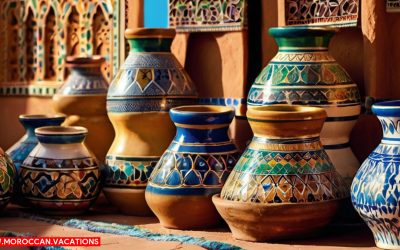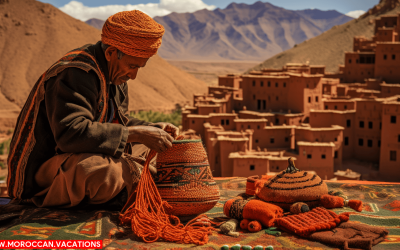The Origins of Moroccan Tea
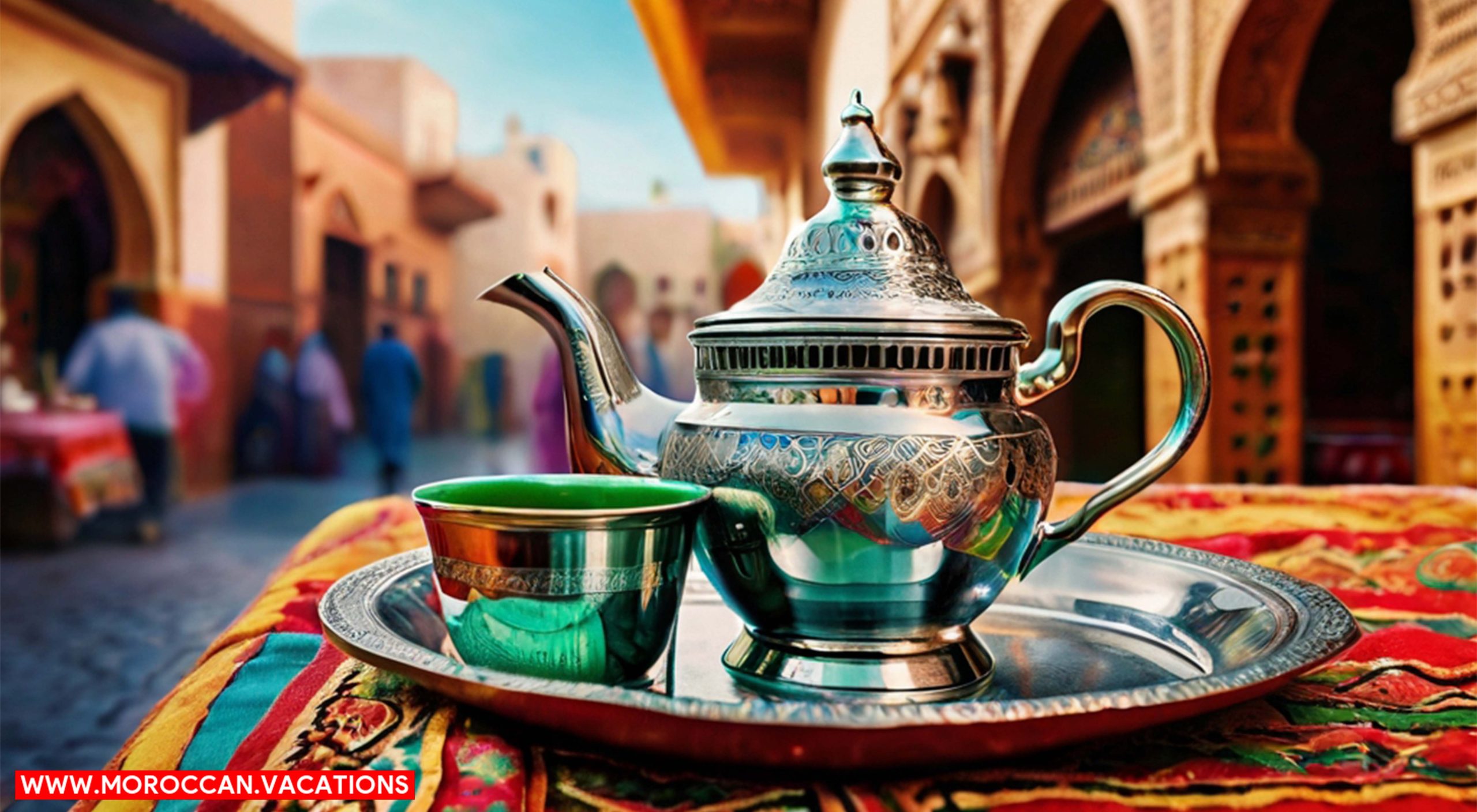

Imagine yourself sitting in a bustling Moroccan café, the air thick with the aroma of mint tea. The clinking of glasses and laughter fill the air as people gather to socialize and connect over this cherished beverage. Moroccan Tea Culture: The Art of Mint Tea and Socializing takes you on a journey into the heart of this vibrant tradition. Discover the origins, rituals, and customs that make Moroccan tea so special, and learn how it brings people together in a spirit of freedom and togetherness.
If you’re wondering about the origins of Moroccan tea, it can be traced back to the ancient trade routes that connected Morocco to the rest of the world. Morocco’s strategic location at the crossroads of Europe, Africa, and the Middle East has influenced its rich tea culture. Throughout history, Moroccan tea has been shaped by a diverse range of influences, including Arab, Berber, and European traditions.
The origins of Moroccan tea can be found in the Arab world, where tea drinking was popularized in the 9th century. The introduction of tea to Morocco can be attributed to the Arab traders who traveled along the ancient trade routes. These traders brought with them not only tea leaves but also the art of tea preparation and the use of aromatic herbs and spices.
In addition to Arab influences, Berber traditions have also played a significant role in shaping Moroccan tea culture. The Berbers, the indigenous people of North Africa, have a long history of using herbs and plants for medicinal purposes. They introduced the use of fresh mint leaves to enhance the flavor and aroma of tea, giving birth to the iconic Moroccan mint tea.
Furthermore, European influences have contributed to the evolution of Moroccan tea. During the French colonization of Morocco in the early 20th century, the French introduced their own tea-drinking customs, such as the use of teapots and tea glasses. This fusion of French and Moroccan tea traditions created a unique blend that is still enjoyed today.
The Ritual of Tea Preparation
To prepare Moroccan tea, gather the necessary ingredients and equipment. The process of making Moroccan tea is much more than just boiling water and steeping tea leaves. It is a ritual that requires precision and careful attention to detail. Here are the steps involved in the tea preparation:
- Ingredients:
- Green tea leaves: Choose high-quality loose-leaf green tea for the best flavor.
- Fresh mint leaves: Use a generous amount of fresh mint leaves to give the tea its distinct aroma.
- Sugar: Moroccan tea is traditionally sweetened with sugar, but you can adjust the amount to your taste.
- Equipment:
- Moroccan teapot: This teapot, known as a “teanaja,” is made of metal and has a long spout for pouring.
- Tea glasses: Moroccan tea is traditionally served in small, clear glasses that allow you to appreciate the tea’s vibrant color.
- Tea tray: A decorative tea tray is used to serve the tea, along with small dishes of nuts, dates, or pastries.
- Techniques:
- Rinse the teapot and glasses with hot water to warm them up.
- Add the green tea leaves, mint leaves, and sugar to the teapot.
- Pour boiling water over the ingredients and let them steep for a few minutes.
- Pour a small amount of the tea into a glass, then pour it back into the teapot. Repeat this process three times to mix the flavors.
- Fill the glasses with the tea, pouring from a height to create a frothy layer on top.
The tea preparation in Moroccan culture is not just about making a beverage; it is a way of connecting with others, sharing stories, and enjoying the moment. The traditional tea ceremonies are a symbol of hospitality, friendship, and freedom.
The Importance of Mint in Moroccan Tea
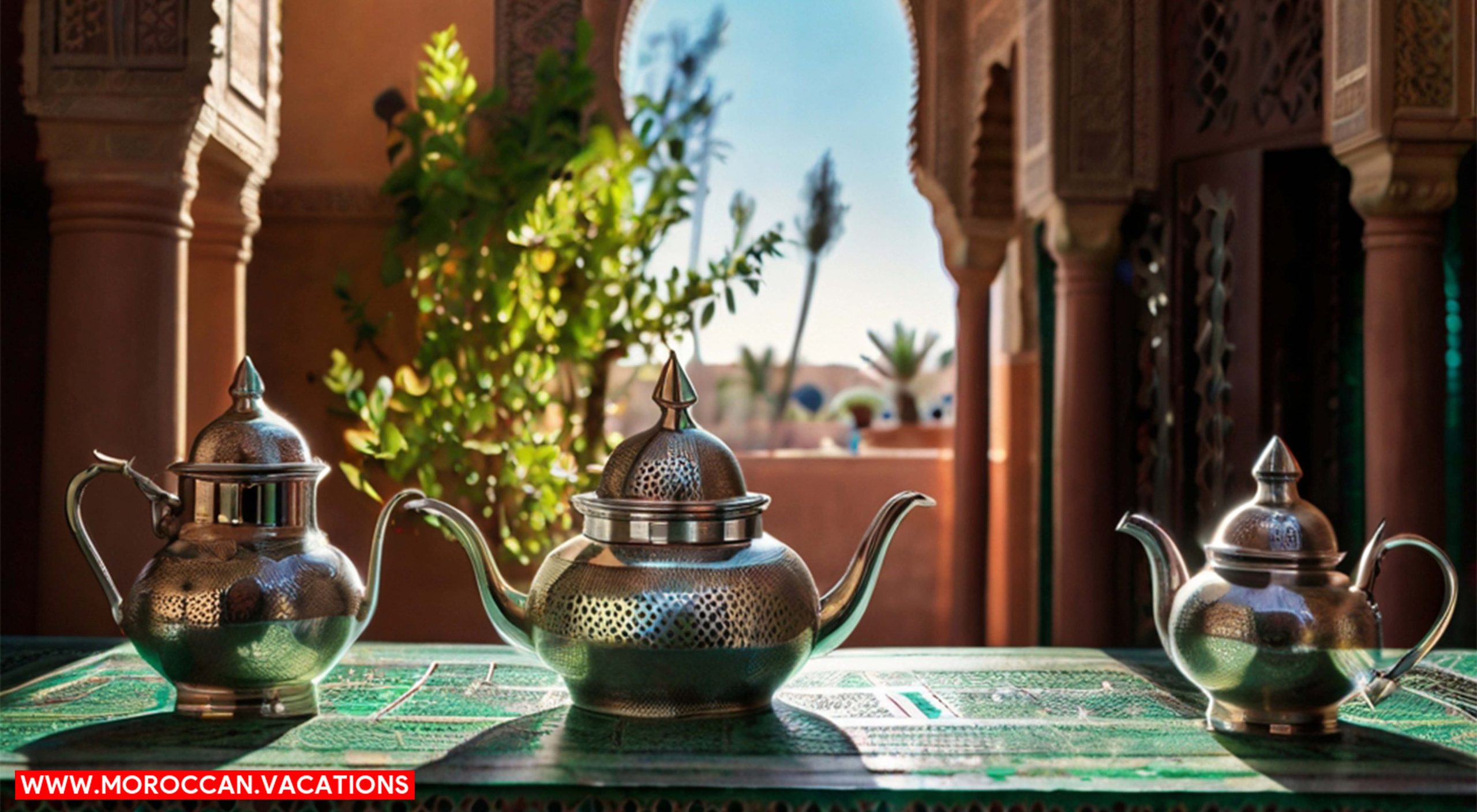

Mint plays a vital role in the flavor and aroma of Moroccan tea. The use of fresh mint leaves adds a refreshing and fragrant touch to the tea, making it a delightful beverage to enjoy. Moroccan tea is traditionally made with spearmint, known as “nana” in Morocco, which has a slightly sweeter taste compared to other mint varieties. However, other types of mint, such as peppermint or Moroccan mint, can also be used to infuse the tea with different flavors.
The importance of mint in Moroccan tea is not only limited to its taste and aroma. Mint also offers numerous health benefits, making it a valuable addition to this beloved beverage. Mint is known for its soothing properties, which can help with digestion and relieve stomach discomfort. It is also rich in antioxidants and can provide a refreshing burst of energy. Furthermore, mint has been used for centuries in traditional medicine for its potential anti-inflammatory and antibacterial properties.
To further emphasize the significance of mint in Moroccan tea, here is a table showcasing some popular mint varieties and their unique characteristics:
| Mint Variety | Flavor Profile | Health Benefits |
|---|---|---|
| Spearmint | Sweet and mild | Soothes digestion |
| Peppermint | Cool and minty | Energizing |
| Moroccan Mint | Bold and robust | Anti-inflammatory |
The use of mint in Moroccan tea not only enhances its taste and aroma but also contributes to its health-promoting qualities. So next time you savor a cup of Moroccan tea, take a moment to appreciate the important role that mint plays in this ancient tradition.
Tea and Socializing in Moroccan Culture
When you gather with friends and family in Moroccan culture, tea becomes more than just a beverage—it becomes the catalyst for socializing and connecting. The tea ceremonies that take place in Moroccan households are not just about serving a hot drink; they are a symbol of hospitality and friendship. Here are a few reasons why tea plays such a vital role in Moroccan socializing:
- Tea ceremonies: Moroccan tea ceremonies are a time-honored tradition where the host meticulously prepares and serves tea to their guests. This ritualistic process involves pouring the tea from a height to create a frothy layer on top. The act of serving tea in this manner showcases the host’s skills and attention to detail, setting the stage for meaningful conversations and shared experiences.
- Symbol of hospitality: In Moroccan culture, offering a cup of tea to someone is an expression of warmth and hospitality. It is a gesture that welcomes guests into the home and fosters a sense of belonging. The act of serving tea is seen as an invitation to sit, relax, and engage in meaningful conversation.
- Traditional tea recipes: Moroccan tea is typically made with a blend of green tea leaves and fresh mint leaves, creating a refreshing and aromatic beverage. The use of traditional tea recipes passed down through generations adds a sense of heritage and authenticity to the tea-drinking experience. The flavors and aromas of the tea create a sensory experience that enhances the socializing aspect, making it more enjoyable and memorable.
In Moroccan culture, tea is not just a drink; it is a symbol of connection, hospitality, and tradition. The tea ceremonies and traditional tea recipes bring people together, fostering a sense of community and creating lasting bonds. So, the next time you gather with friends and family, remember to embrace the Moroccan tea culture and savor the moments of socializing and connection that it brings.
Tea Etiquette and Customs in Morocco
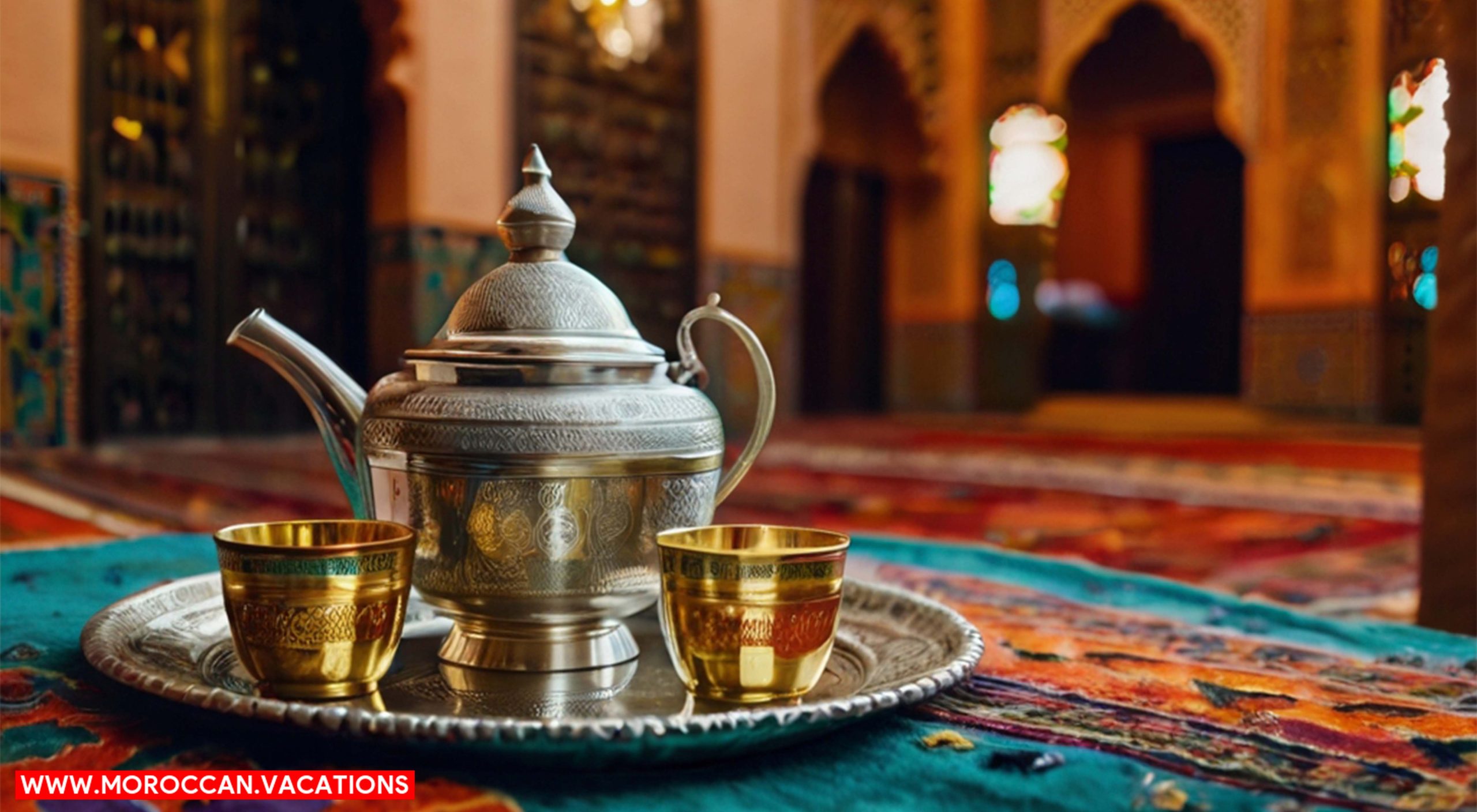

When you participate in a Moroccan tea ceremony, it is customary to use a small glass and hold it with your right hand. The tea serving traditions in Morocco are steeped in rich culture and etiquette. The Moroccan tea ceremony is not just about drinking tea, it is a social event that brings people together.
To fully appreciate the Moroccan tea ceremony, it’s important to understand the customs that surround it. The table below provides an overview of the key customs and etiquette observed during a Moroccan tea ceremony:
| Custom/Etiquette | Description |
|---|---|
| Pouring the Tea | The host pours the tea from a height to create froth and enhance the flavor. |
| Serving Order | The tea is traditionally served to guests starting with the eldest or most important person first. |
| Accepting the Tea | When offered a glass of tea, it is polite to accept it with your right hand. |
| Sipping Etiquette | The tea is sipped slowly and in small quantities, allowing the flavors to linger on the palate. |
| Thanking the Host | It is customary to express gratitude to the host for their hospitality and the tea they have served. |
The Moroccan tea ceremony is a beautiful tradition that symbolizes warmth, hospitality, and friendship. By following these customs, you can fully immerse yourself in the Moroccan tea culture and create lasting memories with friends and loved ones. So next time you find yourself in Morocco, don’t forget to experience the joy of the Moroccan tea ceremony.


Samira Amrani
The passionate author behind Moroccan Vacations, sharing her expertise and love for Moroccan culture, cuisine, and travel experiences to inspire wanderlust in every reader.
Related Articles
Marrakesh's Historical Hammams: Bathhouses With Architectural Grace
Origins of Marrakesh's Hammams Imagine stepping into a world of architectural marvels, where ancient traditions and modern luxury intertwine. Welcome to Marrakesh's historical hammams, where the artistry of the past meets the indulgence of the present. In these...
Cultural Experiences: Local Artisans and Their Crafts in Dades Valley
Dades Valley: A Cultural Overview You're about to embark on a vivid journey, exploring the heart of Dades Valley. Here, 60% of residents are skilled artisans. As you wander, you'll feel the pulse of centuries-old traditions alive in their crafts. You're not just...
Cultural Heritage: Preserving Traditions in Dades Valley
Explore the rich tapestry of cultural heritage and time-honored traditions nestled in the breathtaking Dades Valley. Immerse yourself in a journey of preservation and discovery.


